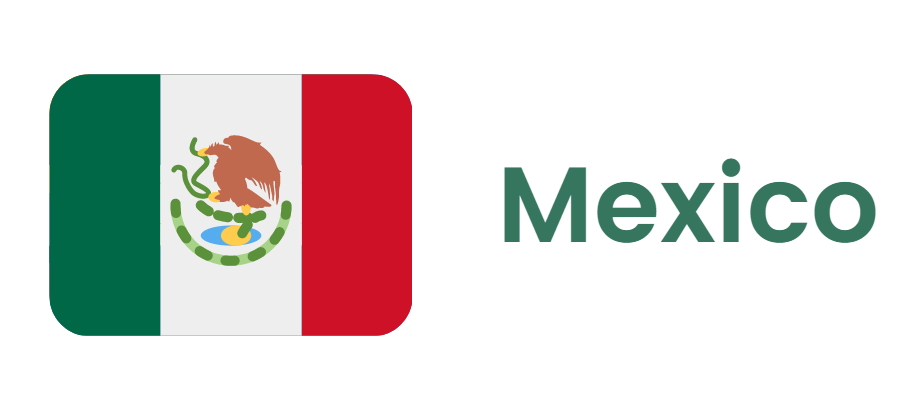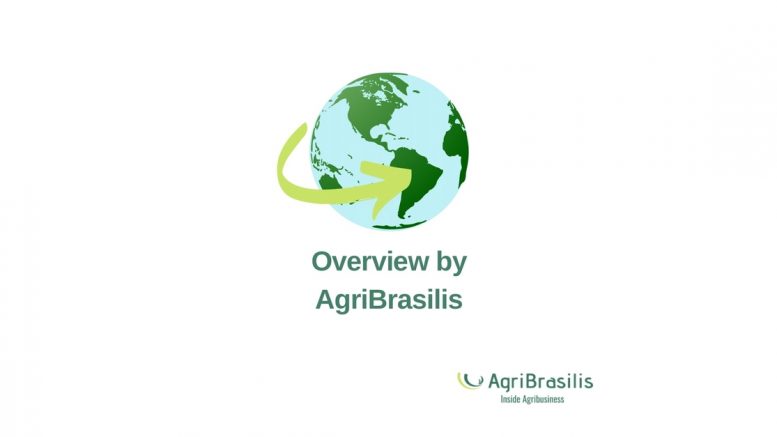Agrarian reform began in 19 departments in Colombia
Alert in Patagonia was issued about the presence of tucura sapo (Bufonacris claraziana), grasshopper that harms region’s forage production. After detection of population outbreak of this insect in Chubut and in the south of Río Negro, it is recommended that monitoring be intensified. (National Agri-Food Health and Quality Service)
Lack of rainfall affects production in 126.5 million hectares. It is estimated that 75% of the agricultural area in Argentina is affected by drought. (National Water Institute; National Space Activities Commission)
Central Bank restricts access to foreign currency for farmers who sell at a special exchange rate. This should reduce soybean sales for next week, according to Gustavo Idigoras, president of the Argentine Chamber of Crushers and Oilseed Exporters. (CIARA-CEC)
![]()
Exports of US$ 14.8 billion of agribusiness products in August represent an increase of 36.4% compared to the same month of 2021. Foreign sales of agribusiness had a share of 48.1% in total exports. Highlight to corn and fresh meat. (Ministry of Agriculture)
Antônio Carlos Monteiro is the new vice president of Banco Agro. Monteiro is a professor of economics and finance and was the executive secretary of the Central Bank. (Banco Agro)
Agronomic Institute of Campinas launches five high-yield sugarcane varieties. Productivity is 12 to 27% higher than the standard variety observed in research, considering yields and longevity. They stand out for their sucrose content, increased longevity of the sugarcane fields, the possibility of a long harvest period and adaptation to different sugarcane regions and different types of soils. (IAC)
Recognition agreement was signed between customs agencies from Brazil and the USA. Brazilian companies certified as authorized economic operators will be able to export to the US faster and with less bureaucracy. After seven years of negotiations, Brazilian Federal Revenue Office signed a mutual recognition agreement with the US Customs. (Receita Federal)
First cargo of grapes from Egypt arrives in Brazil, with 28 tonnes, purchased by a wholesaler in the State of São Paulo. Grape imports were falling in recent years, as a result of an increase in national production, but international purchases rose 41% between January and August 2022. (Tridge Transportadora; Secretariat of Foreign Trade)
Based on the estimated coffee harvest and average prices reported by farmers, the total gross revenue from the Brazilian coffee sector was calculated at US$ 11.95 billion in 2022. (IBGE)
Brazilian startup Solinftec will deliver 30 robots to the US in 2023. Company has developed a new fertilizer spraying technologies using artificial intelligence in partnership with the e-commerce platform Farmers Business Network. Invention was designed to apply herbicides and fertilizers only where thei are necessary. Technology is already in use in Brazil and can reduce consumption of products by up to 70%. (Solinftec)
Milk imports reached 172 million L in August, an increase of 63.3% compared to July. (Milk Intelligence Center)
After 09/30, the National Registration of Tractors and Agricultural Machines becomes effective. Aprosoja requests to postpone the start of the registration period because of the lack of retailers in some cities and the beginning of soybean planting. “Many cities, for example, do not have retailers and the nearest one is very far away, there are cities where the retailer is 300 km away or even more. And in order to register with Renagro, you need to take the machine to the dealer for it to be able to certify it. How can this be done in the short term?” said Fabrício Rosa, executive director of Aprosoja. (Association of Soybean and Corn Farmers of Mato Grosso)

![]()
Variety of rice grown with less water use, that does not require flooding; new model of hydrological project to contain drought in farms; and desalination for coastal and agroecological agriculture are highlights of Expo Chile Agrícola. Karla Cordero, researcher at the Agricultural Research Institute explains that the new rice variety “is a baseline improvement project to develop climate-smart rice, eliminating the paradigm that large amounts of water are needed to grow it.” (INIA)
Association of Fruit Exporters rejected a bill that limits working hours to 40 per week before the Senate Labor and Social Security Commission. The association’s president, Iván Marambio, argued that the agricultural sector should be subject to special labor regulations, because much of the work takes place during the harvest period, which lasts a few months. (Asoex)
Fundação para Inovação, in partnership with INIA and D’olbek brewery, carry out research on the nutritional chemical composition of the residues left by barley, hops and yeast in the Aysén Region, which brews artisanal beers. Beer residues can complement bovine feed. According to the research coordinator, José Daza, “Yeasts have been described as having a high carbohydrate content and potential to improve lactic acid fermentations, so we are testing this residue as an additive.” (INIA; FIA)
![]()
Agrarian reform began in 19 departments. Titles for 681,372 hectares of agricultural land were delivered, which will benefit peasants, Indigenous people and Afro-descendants. (National Land Agency)
Diego Bautista Ríos is the new president of the Rural Development Agency. Ríos was director of National Planning, advisor to Incoder and consultant to the Presidency of the Republic. (Ministry of Agriculture)


States of Colima, Coahuila, Chihuahua, Guerrero, Jalisco, Michoacán, Oaxaca, Puebla, Quintana Roo, Sinaloa, Veracruz and Yucatán recorded agricultural damage in more than 138 thousand hectares of crops such as corn, beans, barley, peppers, fava beans, chayote, banana, cotton, apple, walnut and coffee. Field inspection work was carried out on 53,718 hectares, identifying total loss of 42,219 hectares, for which insurers will pay compensation of US$ 2.5 million. (Ministry of Agriculture)
![]()
Farmers denounce that smuggled tomatoes dominate the market in the country, including the case of the formal market. Product comes from Brazil and Argentina and contributes to aggravate the crisis in the Paraguayan tomato sector. One of the reasons is the cost of tomato farming in Paraguay and the selling price of the local product to the consumer, which is three times higher. (National Council of Vegetable Farmers)
![]()
Recovery of ginger supply and restart of shipments in China, main world supplier, causes abrupt drop in the international value of the Peruvian product. While Peruvian ginger exports grew by 21% from January and August 2021, exported value dropped 17%. (FreshFruit Consulting)
Sanitary protocols for entry of pitahayas in the US will be finished in 2023, that could increase Peruvian cultivation. “When this market opens, the number of hectares, that today are between 3,000 and 5,000, will skyrocket, because the US, where we export to today, is a market with great demand compared to Europe.” said Diego Rodríguez, CEO of the agroindustry R Coorp. (R Coorp)
Forecasts indicate coffee exports will increase in 2022, reaching more than US$ 2.15 billion. Production is higher than expected for table grapes, avocados and blueberries. (FreshFruit Consulting)
![]()
Uruguay was the country in South America with the least negative impact on food security indices recorded in recent years, according to FAO. Number of people using popular cafeterias, under the management of the Ministry of Social Development, dropped from 100,000 to 60,000 between 2019-2021. (FAO)

MORE ABOUT AGRIBUSINESS:

